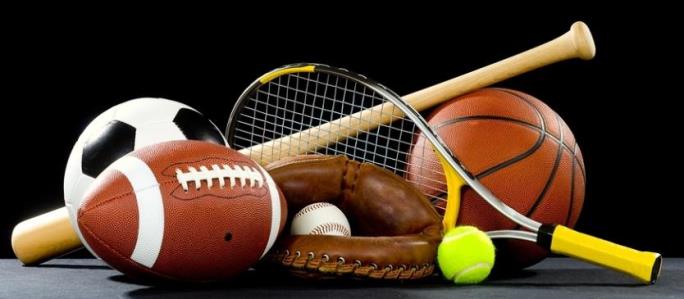DUSSELDORF, Germany—The most physically imposing volleyball team I have ever seen was that of Rutgers-Newark in the mid-1990s. If this sounds like an obscure bit of sports history, please bear with me.
I was an undergraduate at Princeton then, and though I didn’t make Princeton’s varsity team, I was friends with the guys on the team and went to most of their matches. One of the highlights of every season was watching Rutgers-Newark warm up. You’d swear that a player had to touch 11 feet just to make the roster, and if he couldn’t hit a ball straight down and make it bounce back up to the ceiling, he'd probably be riding the bench.
These guys were as good as anyone at volleyball powerhouses like UCLA, Stanford, or USC. So how did these players end up in Newark, of all places? (However bad you think the violence, drug problem, and urban decay in Newark are these days, they’re not even close to what they was like back then.)
Needless to say, Rutgers-Newark was not luring too many guys out of California. Instead, the coach had a pipeline to the Caribbean: he found exceptional players from Puerto Rico, Haiti, Cuba, and Jamaica – some from places far rougher than Newark – and offered them the promise of a strong education and an incredible athletic experience.
International Recruits on the Rise
This strategy gave Rutgers-Newark an enormous advantage – for a while. These days – thanks in part to many factors, including the increased demand for US education and the virtual shrinking of the globe – international recruiting is now commonplace. Guys that would have gone to Rutgers-Newark are now being recruited by many programs, and coaches in every sport routinely look overseas for talent.
But, even when coaches can now watch YouTube videos of athletes and receive resumes by email, the process of recruiting is still not easy. Nor is it easy for an athlete to get recruited, especially when American universities care as much about grades, SAT/ACT scores, and extracurricular activities as they do about goals scored and championships won.
I met recently with Philipp Leidgens, the director of Sport Scholarships, one of Germany’s most prominent athletic recruiting firms. Philipp helps match German athletes with US colleges and then gives them guidance to help ensure that their applications are successful and that they can qualify for athletic scholarships. Like his counterparts in the U.S., Pillipp has to get to know his student-athletes well, gauging their academic readiness as well as their athletic skills. And he has to know the colleges well, in order to give students good advice and to send credible, enthusiastic prospects to coaches.
While it may be obvious that a Haitian would want to study in the US (even in Newark), a German’s desire may be less obvious. Germany, of course, is one of the world’s economic powerhouses, with no shortage of great universities.
What Germany – and pretty much every other country in Europe – doesn't have is great college athletics.
The American Student-Athlete
A standout high school soccer player in Germany has two choices, both unsatisfactory. He can either pursue a professional soccer career by entering the club system, which is a full-time job. Or he can enter university, thus effectively ending his dreams of playing professionally. There’s no time for training and no outlet for competition if you’re studying full-time in Germany. Girl athletes in Germany have fewer choices than the boys do, since the professional system is less developed.
So, they turn to the United States.
American college athletics have their troubles, often serious ones. The fervor for sports, especially football and basketball, can overshadow a school’s focus on academics. Many critics accuse the NCAA of imposing indentured servitude on college athletes (it also has complex, confusing rules for recruitment). Nonetheless, it’s hard to imagine a stronger combination of athletic and intellectual opportunities than those offered by America’s great colleges.
Philipp says that good American college teams train just as hard and as well as do European professional teams. Meanwhile, American universities offer athletes the very same academic and extracurricular resources that they offer the 309,000 other international students. The good news is, whether you’re at Princeton, Pomona, or Penn State, practice time is built right into the school day.
Getting Recruited
Of course, getting recruited is arguably harder than playing the sport in the first place. Every soccer player knows that he has to run fast and have good footwork, but how does a kid attract the attention of a coach? And, if a student is dedicating himself to sports, how can he ensure that he’ll qualify academically for the universities to which he aspires?
The first answer to these questions is that aspiring recruits have to choose reasonable schools, just as conventional applicants must. It’s futile to strive for schools and teams that are so good that they’re beyond their reach, and it’s a waste of time to pester coaches who aren’t going to return their emails. But it also might not be worthwhile to end up on a team that won’t challenge you or in a school that doesn’t have the academic rigor that you want.
One aspect of the application process where athletes have an advantage is in standardized testing. Controversial as it may sound, the truth is that athletic recruits who are admitted – along with other so-called “hooked” applicants – tend to have lower average SAT or ACT scores than do the majority of their classmates at their respective colleges. Given their athletic accomplishments and the contributions that they are expected to make, admissions offices give them a break.
With that said, testing requirements tend to be much more rigid. Coaches will often tell their recruits what SAT scores they need; below a certain score, a coach probably won’t bother. That’s why it’s essential for athletes to study for the SAT, even if it means cracking the books between games at a soccer tournament or leaving the victory celebration an hour early. (That’s where ArborBridge can lend an assist.)
If all goes well for international recruits, those victory celebrations will only get more intense, with thousands of American kids cheering them on and proud to be wearing the same school colors. As long as they don’t all end up on teams playing against Princeton, that’s fine by me.






